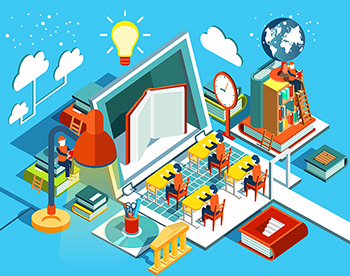 In an attempt to better understand the blended learning approach, we met with the Pragma Academy Learning and Development team to provide answers to some frequently asked questions.
In an attempt to better understand the blended learning approach, we met with the Pragma Academy Learning and Development team to provide answers to some frequently asked questions.
Is there still a benefit to keeping classroom courses?
There might be a need for some courses to remain as classroom courses due to the nature of the content. For content where interactive, collaborative learning is the best approach, then the classroom would still be the preferable way to deliver this. Also, for content that is very complex in nature, work sessions are often better. That being said, any knowledge that needs to be embedded should be done, or repeated, digitally.
Why not migrate completely to elearning and not do any face-to-face courses?
Sometimes meeting with peers and collaborating is of much more benefit to the learning process than rather just doing an elearning course. However, digital learning in the form of online contact sessions and forums helps to build that collaboration.
Why has Pragma decided to use the blended learning approach for some of their courses?
Learners can continue with their daily work activities and fit the learning into their day rather than being ‘unproductive’ for three days while attending a course.
Also, we’re moving with the times: there has been exponential development in the learning sector over the last 10 years and Pragma wants to remain abreast of these developments and trends. Pragma has a culture of working independently where employees have tasks to carry out and they have to check in at certain times. A blended approach to learning reinforces this culture.
Digital learning is the way of the future and a blend consists of digital learning.
What exactly is blended learning?
Blended learning provides a blend of online learning, accessed via a learning management system (LMS), webinars or online contact sessions and classroom facilitated training. Blended learning enables the learner to access learning in many different forms and then consolidate that learning in a classroom, and even in the workplace.
How does blended learning support self-directed learning?
Self-directed learning makes sense for the differing levels of competencies. A classroom of learners usually has various levels of competency and knowledge – some learners get bored while others feel overwhelmed.
Knowledge transfer is better when learners can learn at their own pace. Acquiring knowledge can be self-directed.
How does blended learning support collaboration in the workplace?
Blended learning is important because we cannot get away from collaborating with others as a way of learning. Knowing information is only the start. You need to now make that practical and actually start applying that information through using scenarios – often examples of what happens in real life. What are you going to be faced with in your organisation? Scenarios and case studies make the learning real and provide context for the learning.
Some scenarios and case studies can be studied and applied individually, but real learning starts to happen when you interact with others who are also going through similar scenarios. You start to chat about what you are doing, what problems you have encountered and how you solved the problems.
Arriving back at the workplace you start having to implement what you have learnt. The only way to be able to successfully do that would be to have support of someone who knows more than you and who is willing to show you the ropes. Someone who could give you a big task in smaller steps and support you through the process. Line manager guides are designed to assist coaching and mentoring. Learning is never going to be effective if you attend one training course and never look at the learning content again.
Training should always be about improving performance, otherwise there really is no need to learn in the first place.
How does Pragma do blended learning?
Blended learning is still in its infancy stages at Pragma and not all of the digital channels have been selected to deliver the blended learning. As such, we have selected the following as the primary method of delivery and will continue to build on these as the organisation matures in this arena:
- Elearning courses
- Online contact sessions
- Face-to-face contact sessions
- Forums
- Webinars
All digital learning currently takes place on a learning management system (LMS). The LMS tracks all of the learning to make sure that learners complete their learning. It also tracks scores ensuring that learners pass each course.
How is digital learning going to grow within Pragma?
The development team is already in many discussions around delivering content in many different digital forms. We are mindful about selecting the right method of delivering content to ensure the best learning experience. For example, learning that can be delivered in an infographic may be preferable to creating an entire elearning module. Additional reading can be done directly on the web rather than spending hours redesigning the content into a PDF document.
To reiterate our earlier statement – this industry is growing exponentially because of the development of technology and the way people interact with this technology.
Look out for the next article in this three-part series where we will unpack why micro-learning is a popular buzz word in learning circles.
